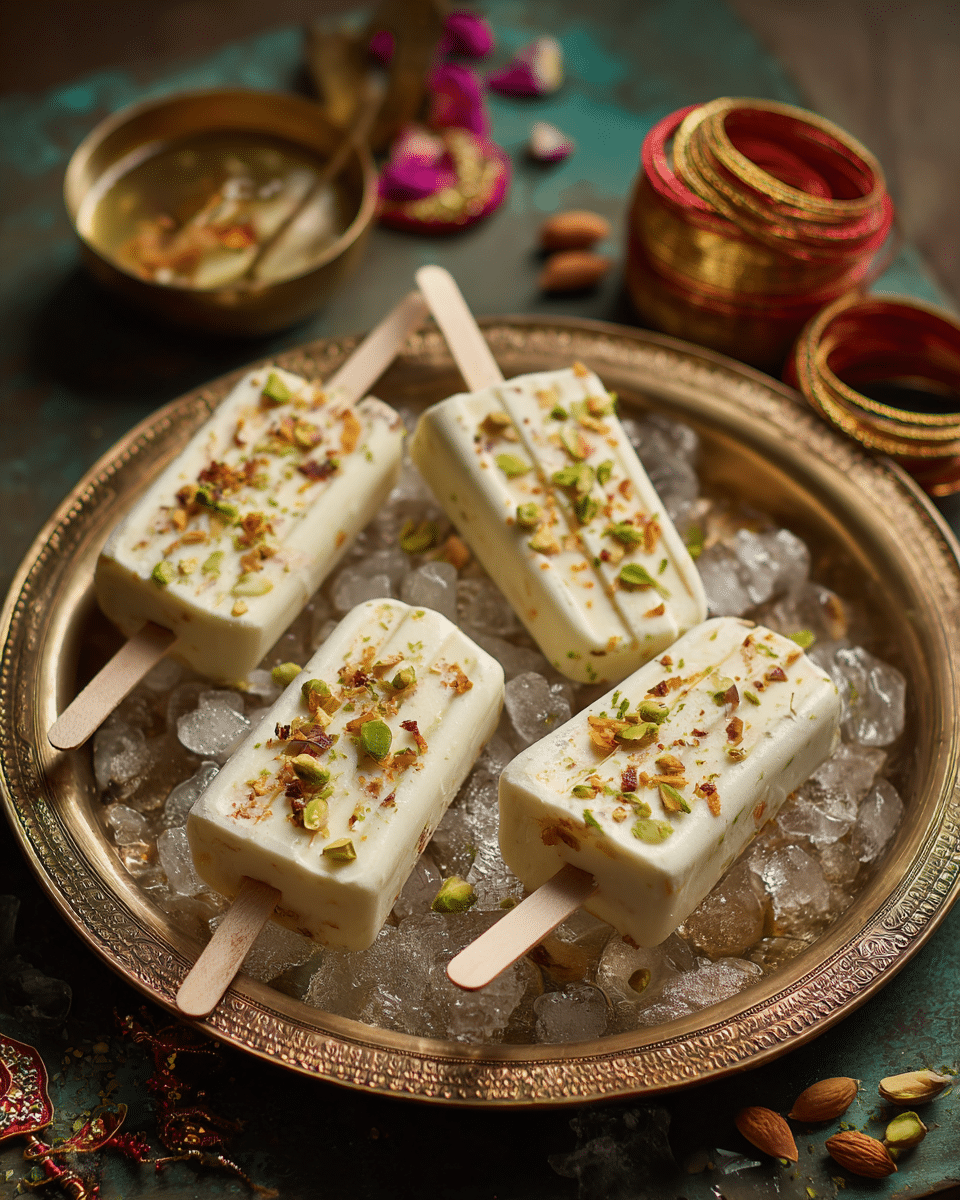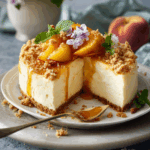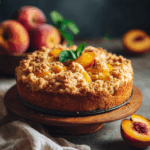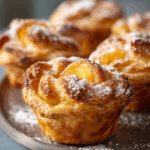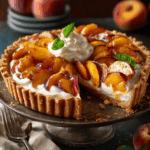Malai Kulfi is a traditional Indian frozen dessert cherished for its rich, creamy texture and deep milky flavor. Often enjoyed during festivals and family celebrations, this kulfi is made by slowly simmering milk until thickened, then flavored with cardamom, saffron, and chopped nuts. Unlike Western ice creams, Malai Kulfi doesn’t require whipping or churning, making it a nostalgic and convenient frozen treat perfect for Raksha Bandhan celebrations with siblings.
FULL RECIPE
Ingredients
- 1 liter full-fat milk
- 1/2 cup condensed milk
- 1/4 cup sugar (adjust to taste)
- 1/2 cup fresh cream
- 1/4 teaspoon cardamom powder
- A pinch of saffron strands (optional)
- 2 tablespoons chopped almonds
- 2 tablespoons chopped pistachios
- 1 teaspoon rose water (optional)
Directions
- In a heavy-bottomed pan, bring the full-fat milk to a boil, then reduce the heat and simmer. Stir frequently to prevent burning and continue until it reduces to about half.
- Add the condensed milk and sugar, stirring continuously until fully dissolved. Let the mixture simmer for another 5–7 minutes.
- Mix in the fresh cream and continue to stir for 5 minutes until well combined and slightly thicker.
- Add cardamom powder and saffron strands. Stir well so the flavors blend evenly.
- Turn off the heat and add chopped almonds and pistachios. Let the mixture cool to room temperature.
- Add rose water (if using), then pour the mixture into kulfi molds or small cups.
- Cover tightly with foil or lids and freeze for at least 6–8 hours or overnight until fully set.
- To serve, dip the mold in warm water for a few seconds and gently remove the kulfi.
Nutrition Facts
- Calories: 280 kcal
- Carbohydrates: 24g
- Protein: 6g
- Fat: 18g
- Saturated Fat: 10g
- Cholesterol: 45mg
- Sodium: 70mg
- Fiber: 1g
- Sugar: 20g
- Calcium: 200mg
Origins and Cultural Significance of Malai Kulfi
Malai Kulfi is a classic Indian frozen dessert with roots that trace back centuries, commonly enjoyed during hot summers and festive occasions. Its name derives from “malai,” meaning cream, emphasizing the dessert’s rich and creamy texture. Traditionally, kulfi has been a popular treat in India, Pakistan, and neighboring regions, often served during celebrations such as Raksha Bandhan, weddings, and festivals. Its unique preparation method, which involves slow reduction of milk, sets it apart from Western ice creams and preserves the authentic flavor and texture cherished across generations.
Unique Preparation Technique
Unlike typical ice creams that rely on churning to incorporate air and achieve creaminess, Malai Kulfi is made by slowly simmering milk until it thickens naturally. This reduction process intensifies the milk’s flavor and creates a dense, creamy base. The addition of condensed milk and fresh cream enriches the texture further, resulting in a velvety frozen dessert. This traditional approach gives kulfi a distinct firmness and a melt-in-the-mouth quality that is both nostalgic and satisfying.
Health Aspects of Malai Kulfi
While Malai Kulfi is a rich dessert, it does offer some nutritional benefits due to its main ingredient, milk, which is a good source of calcium, protein, and vitamins. However, because it contains sugar, cream, and nuts, it should be consumed in moderation, especially by those watching their calorie intake or managing conditions like diabetes. Using full-fat milk and cream increases saturated fat content, but the natural ingredients make it a better alternative to artificial or heavily processed desserts. For a healthier version, sugar alternatives and low-fat dairy can be experimented with.
Flavor Variations
Though the classic Malai Kulfi relies on saffron and cardamom for its distinctive aroma and taste, many variations exist to suit diverse palates. Some recipes incorporate flavors like rose water or kewra essence for a floral note, while others add fruits such as mango or berries for a fruity twist. Chocolate or pistachio kulfis have also become popular modern adaptations. Additionally, some versions include spices like nutmeg or cinnamon to deepen the flavor profile, making Malai Kulfi a versatile dessert that can be customized easily.
Nuts and Garnishes
Chopped almonds, pistachios, and sometimes cashews are integral to Malai Kulfi, adding a delightful crunch and enhancing its flavor complexity. These nuts not only provide texture but also boost the dessert’s nutritional value by contributing healthy fats, vitamins, and minerals. Garnishing with slivers of nuts just before serving adds visual appeal and an extra layer of indulgence. Roasting the nuts lightly before adding them can further amplify their aroma and taste.
Serving Suggestions
Malai Kulfi is best served chilled directly from the freezer and makes for a refreshing treat on hot days. It can be enjoyed on its own or accompanied by rose syrup or falooda (vermicelli noodles soaked in sweet syrup), which adds a fun, colorful element and complements the creamy kulfi. Some also like to pair it with fresh fruit slices or a drizzle of honey or chocolate sauce. Serving kulfi in small portions is ideal because of its richness, making it a perfect dessert to end a festive meal.
Storage and Shelf Life
Since Malai Kulfi is a dairy-based frozen dessert, proper storage is crucial to maintain its flavor and texture. It should be kept in an airtight container or sealed molds in the freezer to prevent freezer burn and absorption of other odors. Kulfi is best consumed within a week for optimal taste and freshness. Thawing and refreezing should be avoided as it can affect texture and cause ice crystals to form. When ready to serve, allowing the kulfi to soften slightly at room temperature for a few minutes improves its creaminess.
Common Mistakes to Avoid
One common pitfall in making Malai Kulfi is not reducing the milk enough, which can result in a watery or icy texture rather than a creamy one. Patience is key, as slow simmering ensures the milk thickens properly. Another mistake is over-sweetening; since condensed milk already contains sugar, it’s important to adjust added sugar accordingly. Additionally, not mixing the ingredients evenly or skipping the addition of aromatic spices can make the kulfi less flavorful. Proper freezing methods also matter—freezing too quickly or unevenly can cause crystallization.
Pairing Malai Kulfi with Other Dishes
Malai Kulfi pairs exceptionally well with Indian sweets like jalebi or gulab jamun, providing a creamy contrast to their syrupy textures. It also complements spicy or rich dishes by offering a cooling effect to the palate. Some enjoy it alongside chai or masala tea, balancing the warm spices of the beverage with the chilled sweetness of the kulfi. For a more contemporary twist, pairing kulfi with fresh fruit salads or light cakes can create a fusion dessert experience.
Making Malai Kulfi Ahead for Celebrations
Malai Kulfi is an excellent make-ahead dessert for parties and family gatherings because it requires freezing time to set properly. Preparing kulfi a day or two in advance ensures it is fully set and ready to serve when guests arrive. This not only saves time during the event but also allows the flavors to meld and deepen overnight. If transporting, keeping the kulfi frozen in insulated containers ensures it remains intact, making it a convenient choice for outdoor celebrations or potlucks.
Conclusion
Malai Kulfi remains a beloved dessert that beautifully captures the essence of traditional Indian sweets with its rich, creamy texture and fragrant flavors. Its preparation, though simple, requires care and patience, resulting in a deeply satisfying treat that delights both children and adults. Whether served during festive occasions like Raksha Bandhan or enjoyed as a refreshing summer dessert, Malai Kulfi offers a timeless taste experience. With numerous variations and serving possibilities, it continues to evolve while staying true to its roots, making it a versatile and cherished dessert in Indian cuisine.

